Cladophora: how does it reproduce and how to get rid of it in the aquarium?

Cladophora is a dark green filamentous algae that belongs to the class of ulfotsials. In total, there are about 200 plant species, but the most common of them are vagus and spherical cladophora. If the first is the enemy of aquarists and turns the water space of the aquarium into an "impassable thicket", then the second looks very beautiful and produces oxygen, which is so necessary for the fish.
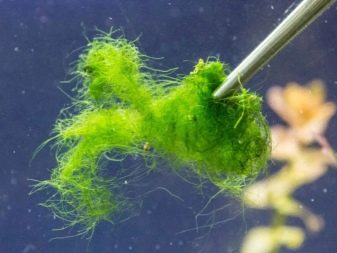

Description
Cladophora looks like branching threads that form bushes. Some of them spread chaotically (stray), others turn into balls (spherical). They are formed by a number of multinucleated cells with a layered membrane and a reticular chloroplast. Filamentous algae can have asexual (by the proliferation of zoospores) reproduction and sexual (fusion of gametes with similar morphology).
The aquarium plant uses substances formed as a result of the vital activity of fish and other plants as food. Wandering multicellular algae is unpretentious in conditions and quickly braids all clean places, covering them with dense moss. It deprives beneficial algae and fish of the light necessary for their normal development, and they gradually die out in the aquarium.
The structure of the spherical cladophore (egagropyls of Linnaeus) allows her to accumulate air in herself under the rays of light. She releases it in the form of gas bubbles. The balls roll freely along the bottom of the aquarium and gradually increase in size (up to 5-11 mm per year). They not only look aesthetically pleasing, but also partially take over the function of aeration (oxygen enrichment).
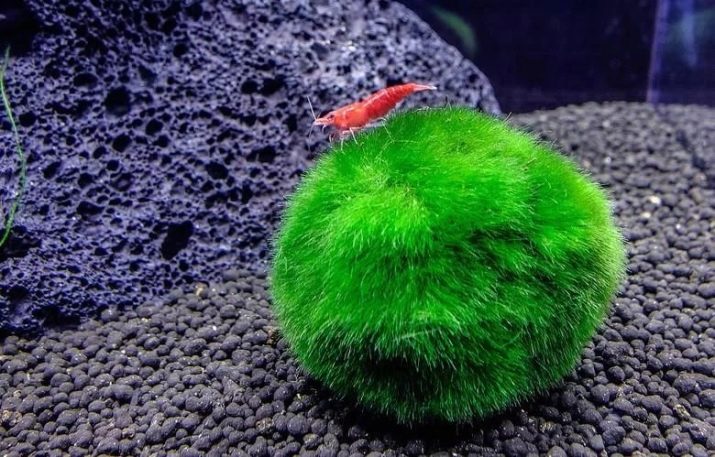
Benefit or harm?
Cladophora creates problems or, on the contrary, "ennobles" the water space, depending on its type.
Stray
This type of multicellular algae "loves" places where water has stagnated. It gradually entwines the bottom, walls of the aquarium, tubes and hoses with dense threads. It deprives the "inhabitants" of the aquarium of light, oxygen and useful minerals. Attempts to get rid of stray algae by mechanical means are futile. It becomes dark and uncomfortable in the water space.
Each detached and free-floating bush forms a new colony, which grows very quickly. All living things die in the aquarium.
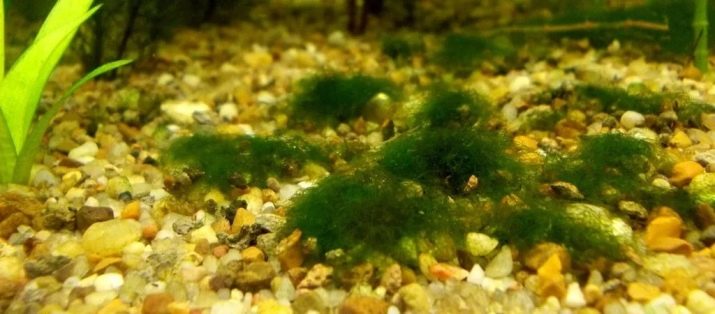
Spherical
Due to free movement in water and a multilayer structure (inside there are "dormant" chloroplasts, which are activated when the green ball splits into separate parts), egagropil is a biological filter that passes a huge amount of water through itself and cleans it of dirt and mucus. For this reason, the balls need to be rinsed with clean water periodically.
Another plus of globular algae is that it carries out the process of photosynthesisby regulating the levels of oxygen and carbon dioxide, as well as minerals in the water. Pisces live very comfortably with such "neighbors".
Egagropils look great, piling up at the bottom in the form of regular-shaped balls. If necessary, they can be easily removed from the aquarium and this will not negatively affect the well-being of its "residents".
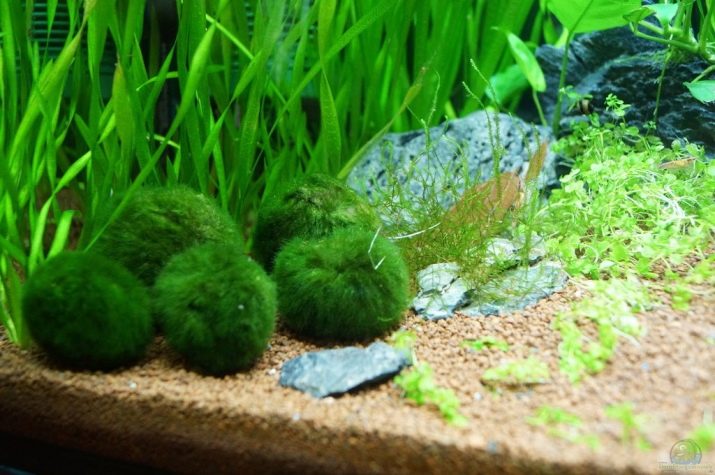
How does algae reproduce?
A wandering algae reproduces on its own, without human intervention. If he tries to remove it from the walls and stones, it will help the plant grow faster. It will "capture" more and more new territories. In the case of globular algae, the situation is different.
Reproduction methods of globular algae are natural and mechanical.
Cladophora eggragropil is a "cold-blooded" plant, for normal life, a temperature of 20-24 degrees is sufficient. If the water temperature exceeds these values, the balls disintegrate into separate components, which then turn into independent aquarium inhabitants. They are put in a separate container with clean water and wait until they form into balls.
The ball is carefully cut in half with scissors. If these parts are carefully "stretched" along the bottom and the edges are fixed (for example, with stones), beautiful islands with even outlines are formed. To propagate the cladophora, the cut segments are placed in another container of water until they turn into balls.
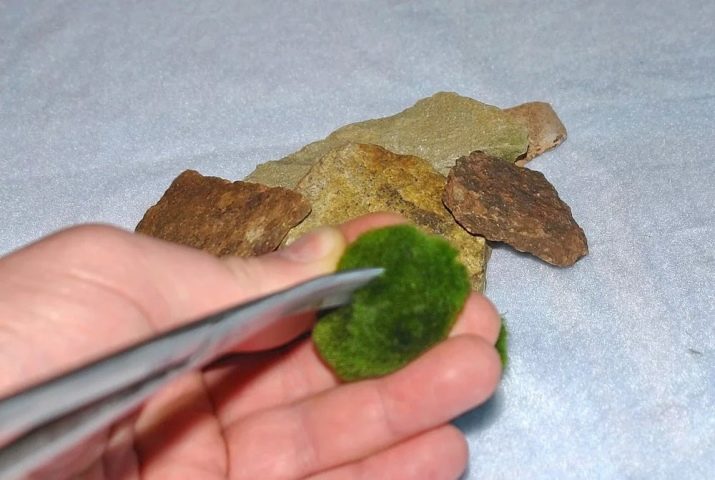
How to get rid of it?
If there is no need to get rid of a spherical cladophore, then it is much more difficult to fight a stray at home. She does not like flowing water, because the threads do not have time to settle and gain a foothold in one place. Therefore, it is recommended to route the oxygen supply hose to algae areas.
Another way to fight is to add Amano shrimp, which love to feast on green threads, into the aquarium. But in order for the new inhabitants of the aquarium to successfully cope with the task, several conditions must be met:
- shrimp must be young;
- their number should be not less than 30 individuals per 100 liters of water;
- new "inhabitants" consume algae only on an empty stomach.
Experienced aquarists often resort to a chemical method of cleaning an aquarium. They draw algicide into a syringe and inject the substance in dosed doses into the places where algae accumulate.
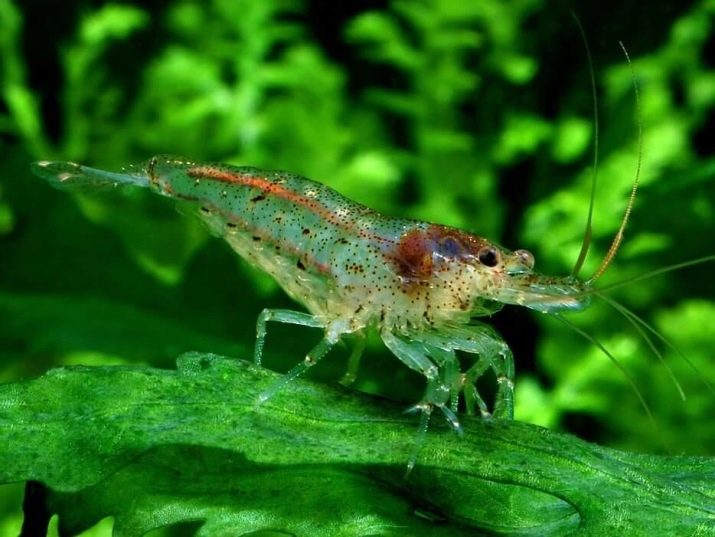
It is important to strictly follow the procedure.
- The compressor, external and internal filters are switched off. This is done in order to stop the mixing process of the water. The chemical will spread more slowly in the water.
- All "living creatures" from the aquarium are transplanted into another container.
- The syringe is directed to the side, abundantly covered with algae, and some of the substance is released. No more than 10 ml of algicide per 100 liters of water should get into the "house" of fish during one treatment.
- When all lesions are evenly treated, you should wait 20-30 minutes. Then you can turn on filters and aeration.
The positive effect will be noticeable from the first time. To get rid of stray algae, it will take 5 to 10 such treatments. Then the fight against the "uninvited guest" will be finally completed.

For aquarium cladophore, see below.








